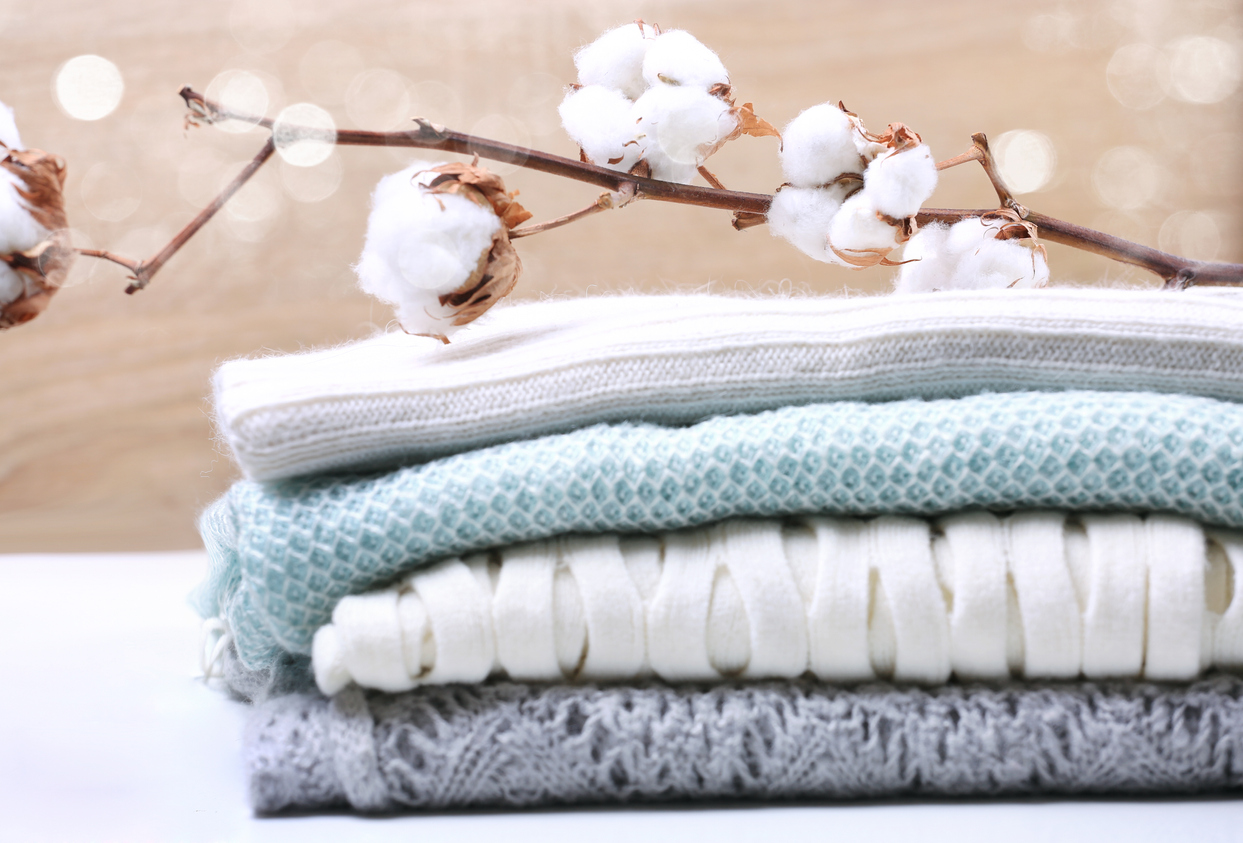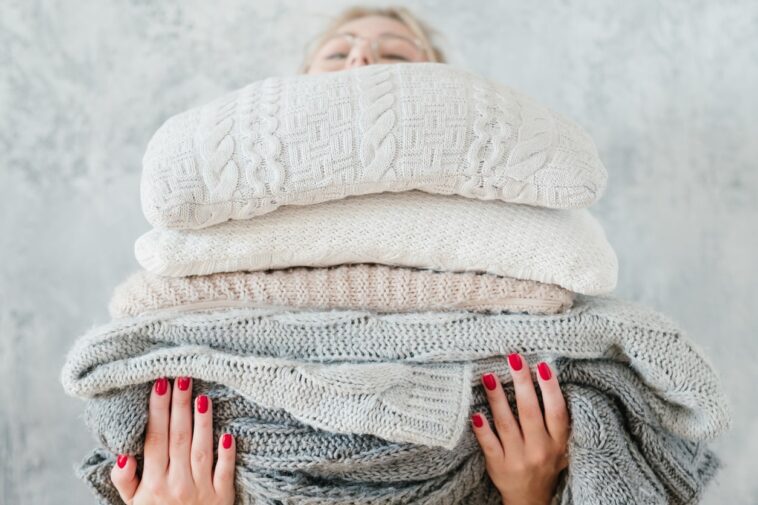In fall/winter, sweaters are in order. However, like other fragile garments, they tend to form lint over time and use, a sign that their mesh is wearing out. And if it is of course easy to remove pilling without damaging the laundry (with a curler, a Velcro strip, sandpaper or even a razor), it is even more pleasant to be able to keep your sweaters in good condition and without pilling. To keep them looking like new for as long as possible, find out how to prevent pilling on your favorite knitted sweaters, cardigans, cardigans, scarves or gloves.
1) Avoiding pilling starts with the choice of knit
Alpaca wool is the only one in the world that does not pill or almost does not pill. For others, whether natural fibers (merino wool, angora, mohair, cashmere, etc.) or synthetic fibers (acrylic, nylon, polyester, etc.), the risk is much higher, especially in what concerns the synthetic which is more readily subject to it. However, we can opt for a tighter weave which will limit the appearance of pilling. In fact, tightly packed fibers break and intertwine less. They are therefore less likely to be damaged.

2) A freezer to avoid pilling, but not only that!
Slip your sweater into a freezer bag, then head to the freezer! For what? In addition to making an itchy sweater more pleasant, this will also help limit hair loss from cuddly sweaters. And in addition, the cold will strengthen the fiberswhich will not fail to avoid small lint. For example, you can freeze your sweater for an hour or two before wearing it. This will give you peace of mind for several hours. It is also possible to go through the freezing stage for 48 hours before defrosting and the first wash. This will make your sweater much less fragile.
3) Wash perfectly to avoid pilling

Use the right products
Good laundry care requires choosing the right products. Here, a hand wash with a mild product is more than recommended (e.g. baby shampoo). However, it is obvious that putting your sweaters in the washing machine is more practical, quick and easy. In this case, you will have to preferably choose a liquid detergent washing powder which could damage the fibers of your knitwear. Our special liquid detergent recipe for wool and delicate laundry is ideal for this wash. If you prefer store-bought products, check the ingredients and make sure your products do not contain bleach or softener (softener causes pilling). And above all, don’t use too much product so as not to saturate the fibers.
Choosing the right program
If your washing machine does not have special wool programalways opt for a gentle and short program, or even cold washing (20 to 30°C). As for spinning, you can go up to a thousand revolutions per minute or more. Spinning delicate laundry at a high speed will reduce the friction of the material which will in fact be pressed against the drum. In weak spinning, the textile follows the movement of the drum and falls regularly, which amplifies the formation of pilling.
And for drying, how do we do it?
We are clear: you absolutely need forget the dryerbecause heat promotes fluff. This device can in fact shrink the stitches in addition to damaging them. Drying in the open air is necessary and if possible flat rather than on a hanger which could deform them. The best technique? Dry your sweater flat on a cotton towel. It’s a little longer, but it’s the best way to keep your stitches in good condition for longer.
Some golden rules to avoid pilling
Always wash your clothes upside downthey will thus be much less fragile. You can also put them in a special net for fragile laundry or a pillowcase to reduce friction. To reduce friction, also avoid overloading the drum and if possible try to wash fragile laundry separately.
5) Latest recommendations to avoid pilling

The fibers quickly tend to get tangled and therefore form pills. To avoid it, you can use a special brush or run a roller over your knitted clothes. By doing this regularly, you will prevent the appearance of pilling! Also avoid putting your wool clothes in a ball with damp clothes in the laundry basket, as humidity can also encourage lint. Finally, be careful when wearing a shoulder bag, a backpack or large jewelry which, through friction, will damage the mesh.


